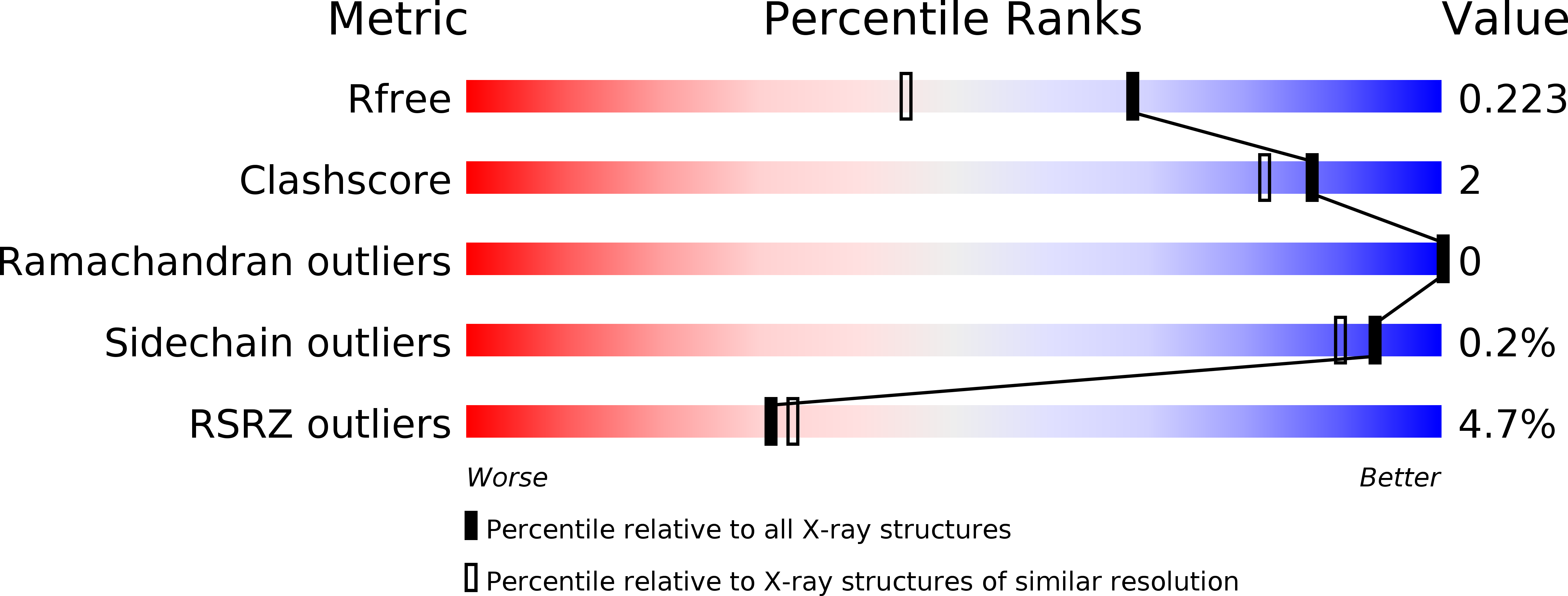
Deposition Date
2018-07-04
Release Date
2018-10-10
Last Version Date
2023-11-22
Entry Detail
PDB ID:
6A7V
Keywords:
Title:
Crystal structure of Mycobacterium tuberculosis VapBC11 toxin-antitoxin complex
Biological Source:
Source Organism:
Mycobacterium tuberculosis H37Rv (Taxon ID: 83332)
Host Organism:
Method Details:
Experimental Method:
Resolution:
1.67 Å
R-Value Free:
0.20
R-Value Work:
0.18
R-Value Observed:
0.18
Space Group:
P 21 21 21


